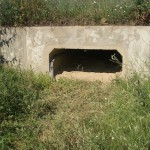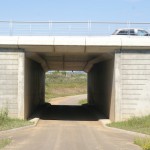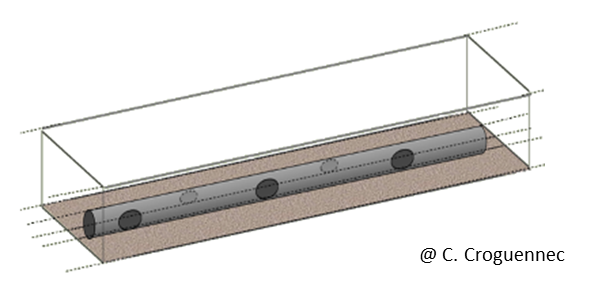The CNRS makes concrete recommendations to install wildlife crossings
26 mars 2018One of LIFE Alister’s research axes consists in finding solutions to make it easier for European Hamsters to travel between the different areas they occupy. There are already wildlife crossings (hamsterducts) in hamster-occupied zones, though their effectiveness may be compromised if predators take advantage of the crossing to catch them as they pass through. The CNRS (French National Centre for Scientific Research) team, working jointly with Jonathan Jumeau, has studied the various types of crossing and how suitable each one is in reducing this predatory risk for the European Hamster and small animals in general.
There are several types of wildlife crossing of different sizes and configurations. The idea was to position tubes of a smaller diameter in these crossings, with holes pierced every 50cm to enable escape if the small animals should meet a fox, house marten or stray cat as they crossed.
From design to construction
These installations required many tests for a certain number of points to be validated:
- What shapes and diameters were most suitable for European Hamsters to use them easily, but not so for the predators?
- How could easy lateral access be introduced into the system? (The idea of side exits can be seen in the diagrams below)
- How does the European Hamster react when it is face to face with a predator?
- How could a simple and inexpensive system be constructed?
Following tests at the CNRS research laboratory, notably to determine the size of the tube, it was necessary to test the system in semi-natural conditions.
A wildlife crossing was equipped with the system, monitoring systems (infrared cameras) and an enclosure at each end of the crossing.
Yves Handrich and Mathilde Tissier
The animals’ behaviour was also studied in the presence of a predator (placed in a cage) to assess their tendency to seek refuge in the installation (APT: Anti-Predation Tube).
Precise recommendations
The APT has also been tested in natural conditions for several hamsterducts without enclosures (since April 2015). This study has enabled us to observe that small mammals prefer to use small-scale structures and that large-scale crossings (those used by agricultural machines, for example) would also benefit from being equipped with an APT to encourage the animals to use them more readily.
All these observations have meant that researchers can now draw up recommendation sheets for the installation of wildlife crossings
These sheets take into account:
- the behaviour of small animals: for example, they prefer to move about directly on the ground rather than in contact with PVC, so it is necessary to cut out the base of the tube
- ground constraints: the movement of agricultural machines must not be disturbed
- the behaviour of predators: the tube should overshoot the wildlife crossing by 1 metre (3 possible exit holes)…
As well as the financial and practical aspects of the system. The future instalment of APTs in wildlife crossings where hamsters are present will be put to DREAL (Regional Department for the Environment, Planning and Accommodation) Roads Division within the context of the next NPA (National Plan of Action) in favour of the European Hamster.
Main features of an underpass tunnel for small animals ©Julie Fleitz













